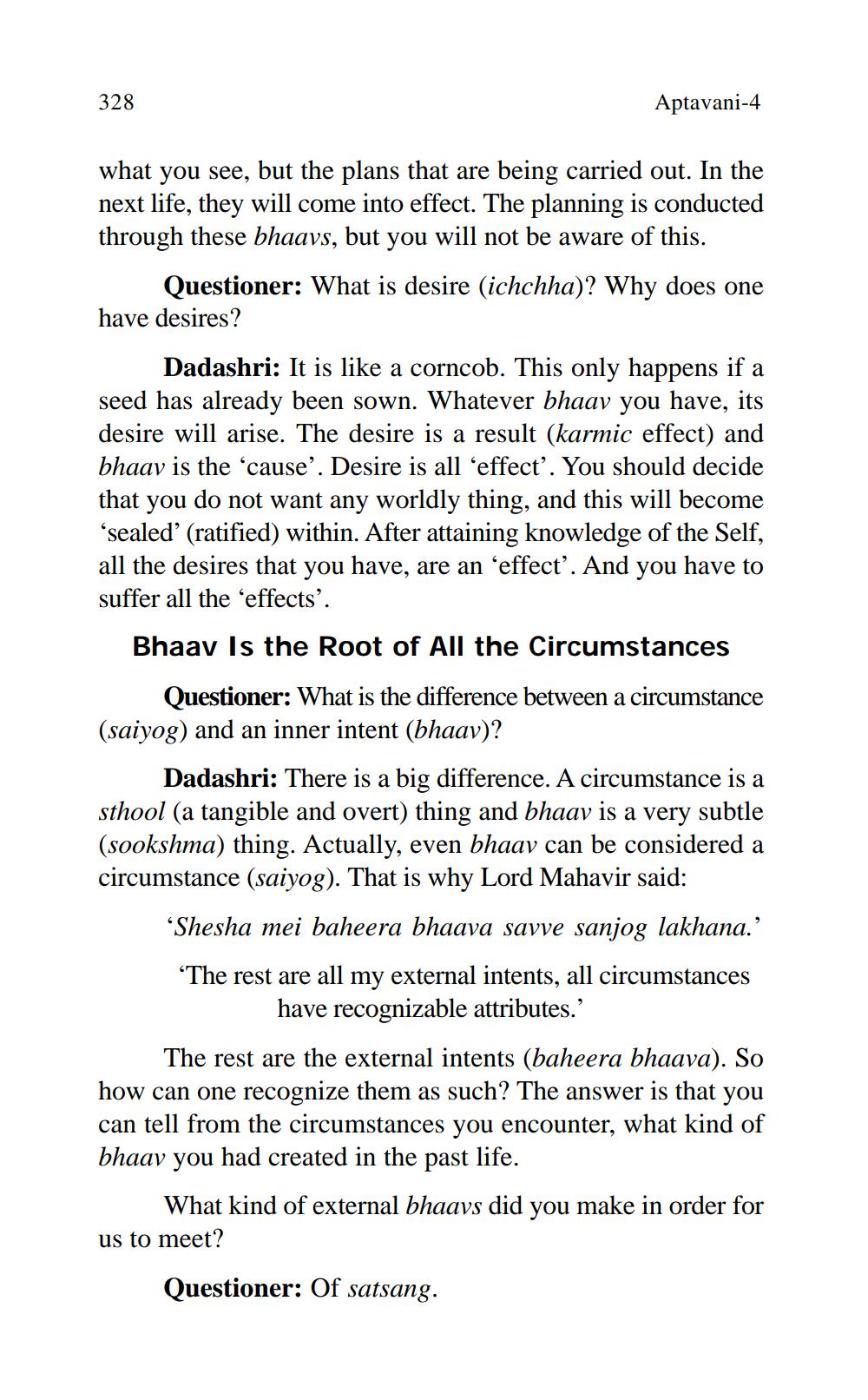________________
328
Aptavani-4
what you see, but the plans that are being carried out. In the next life, they will come into effect. The planning is conducted through these bhaavs, but you will not be aware of this.
Questioner: What is desire (ichchha)? Why does one have desires?
Dadashri: It is like a corncob. This only happens if a seed has already been sown. Whatever bhaav you have, its desire will arise. The desire is a result (karmic effect) and bhaav is the 'cause'. Desire is all 'effect'. You should decide that you do not want any worldly thing, and this will become 'sealed' (ratified) within. After attaining knowledge of the Self, all the desires that you have, are an effect'. And you have to suffer all the ‘effects’. Bhaav Is the Root of All the circumstances
Questioner: What is the difference between a circumstance (saiyog) and an inner intent (bhaav)?
Dadashri: There is a big difference. A circumstance is a sthool (a tangible and overt) thing and bhaav is a very subtle (sookshma) thing. Actually, even bhaav can be considered a circumstance (saiyog). That is why Lord Mahavir said:
‘Shesha mei baheera bhaava savve sanjog lakhana.' “The rest are all my external intents, all circumstances
have recognizable attributes.' The rest are the external intents (baheera bhaava). So how can one recognize them as such? The answer is that you can tell from the circumstances you encounter, what kind of bhaav you had created in the past life.
What kind of external bhaavs did you make in order for us to meet?
Questioner: Of satsang.




